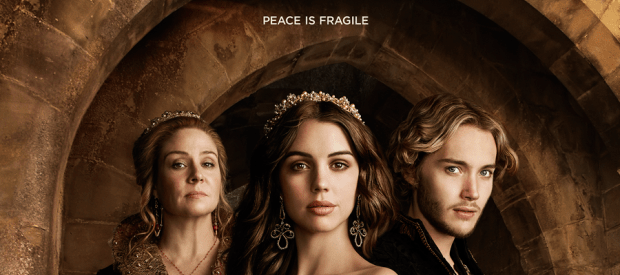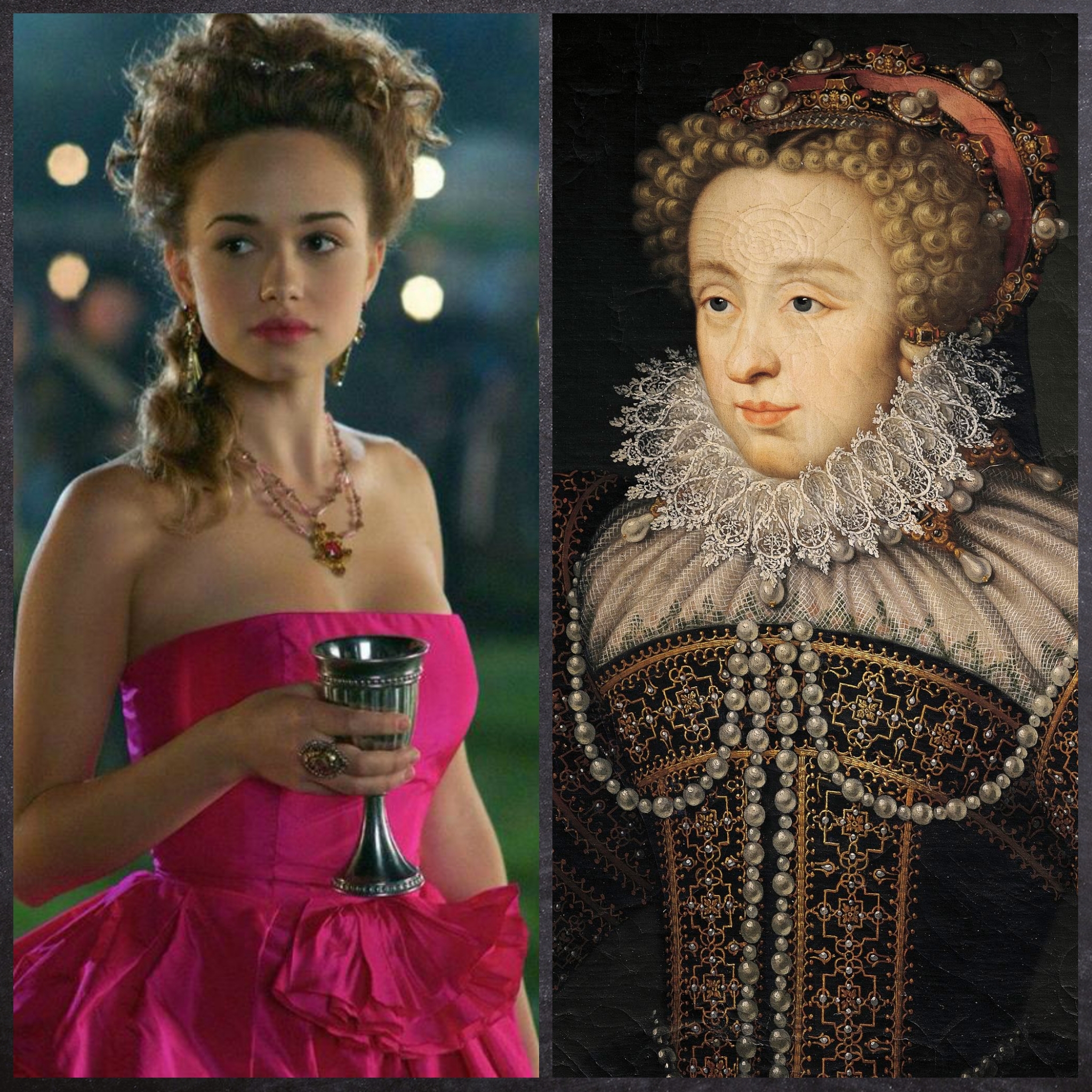CW: This article discusses rape. In the words of Adelaide Kane:
Tonight’s episode deals with a very serious issue. Today, sexual assault happens all too often and the majority know their perpetrator. If this has happened to you, tell someone. You are not to blame for what happened and there are people who can help. Go to www.RAINN.org [or RapeCrisis for the UK]. You don’t have to go it alone.
Reign describes itself as a ‘vivid historical drama’ and isn’t it just? In theory, it follows the life of Mary, Queen of Scots but in reality, the show bears little resemblance to historical events. That’s not to say it isn’t wildly entertaining, but ‘wildly’ is the operative word. The costumes are gorgeous but wholly anachronistic. The setting is sumptuous but inaccurate. The storylines are increasingly dramatic involving increasingly dramatic characters, most of which are invented for the sake of the show rather than based on any kind of history.
Before we consider the major events, here’s a very quick rundown of some events that very much didn’t happen in history. For the most part, this is because the characters involved have been invented for the show. What few characters did exist (namely Mary, Queen of Scots, King Francis, and Catherine de Medici) weren’t involved in these particular storylines because… Well. I’ll trust you to work that out for yourself.
- Greer did not become a madam and open her own brothel.
- Kenna didn’t separate from her husband and move abroad after falling pregnant with her lover’s baby.
- Bash did not have sex with his sister.
- Catherine de Medici didn’t have a sexual relationship with her dead husband’s ghost.
- Bash was not almost murdered by a corrupt deputy, and he did not enter into a dark pact that saved his life but struck Francis down with a fatal ear infection.
- Bash also didn’t kill Clarissa for the sake of Nostradamus’ prophecies.
- General Renaude’s son was not captured and ransomed by the English, and Renaude wasn’t executed for treason.
- Marie d’Guise didn’t contract cancer of the lungs.
- Francis didn’t give his wife free reign to have an affair where she chose.
- Sister Delphine didn’t fill the role of ‘court seer’ and engage in black magic while she was there.
And to answer the most popular question posed to this blog: Was Mary, Queen of Scots raped?
Not by a Protestant rebel during an assassination attempt, she wasn’t.
The Plague
The Show: At the end of Reign’s first season, ritual sacrifices are averted which herald mass destruction, specifically in the arrival of the plague. Francis and Mary have been King and Queen of France for all of five minutes and already the plague is sweeping into their lands, killing people en masse. It quickly reaches the castle, forcing Mary to put it into lockdown. She and Catherine de Medici try to keep the present nobles calm, but some of them insist upon using the plague to cover up various murders they’re committing. One, in particular, Eduard Narcisse, attempts to force Mary and Catherine to kill a rival family in return for food supplied to the castle. Mary refuses and ultimately has Eduard put in a cell with others who are dying of the plague after he poisons the rival family.
After the plague recedes, the country has been left decimated by the pandemic which has killed off a large chunk of the population. Francis and Mary are also left to deal with the murders that were committed under the guise of plague, as well as Mary’s impromptu execution of Eduard.
In History: There was no such plague that afflicted France during these years. King Francis and Queen Mary didn’t have to deal with a pandemic during their brief reign. The last instance of plague had been a hundred years earlier which had marked the second phase of the Black Death. Forty thousand people died in Paris in 1466 and though the plague recurred in subsequent years, there wasn’t another widespread instance in France until 1720. This time, it was Marseilles that was affected and over a hundred thousand people were lost. Even though the plague would recur in between those two instances and relatively frequently, it didn’t have the destructive power of the major outbreaks and wasn’t something Francis and Mary dealt with in the earliest days of their reign.
The character of Eduard Narcisse is fictional but he isn’t based on a particular noble and there are no stories of Mary becoming Queen of France and killing those she disapproved of. Feuds and rivalries between noble families were commonplace and hardly limited to France, but the murder of an entire family, including the children, within the court itself was created for the drama.
Lord Narcisse
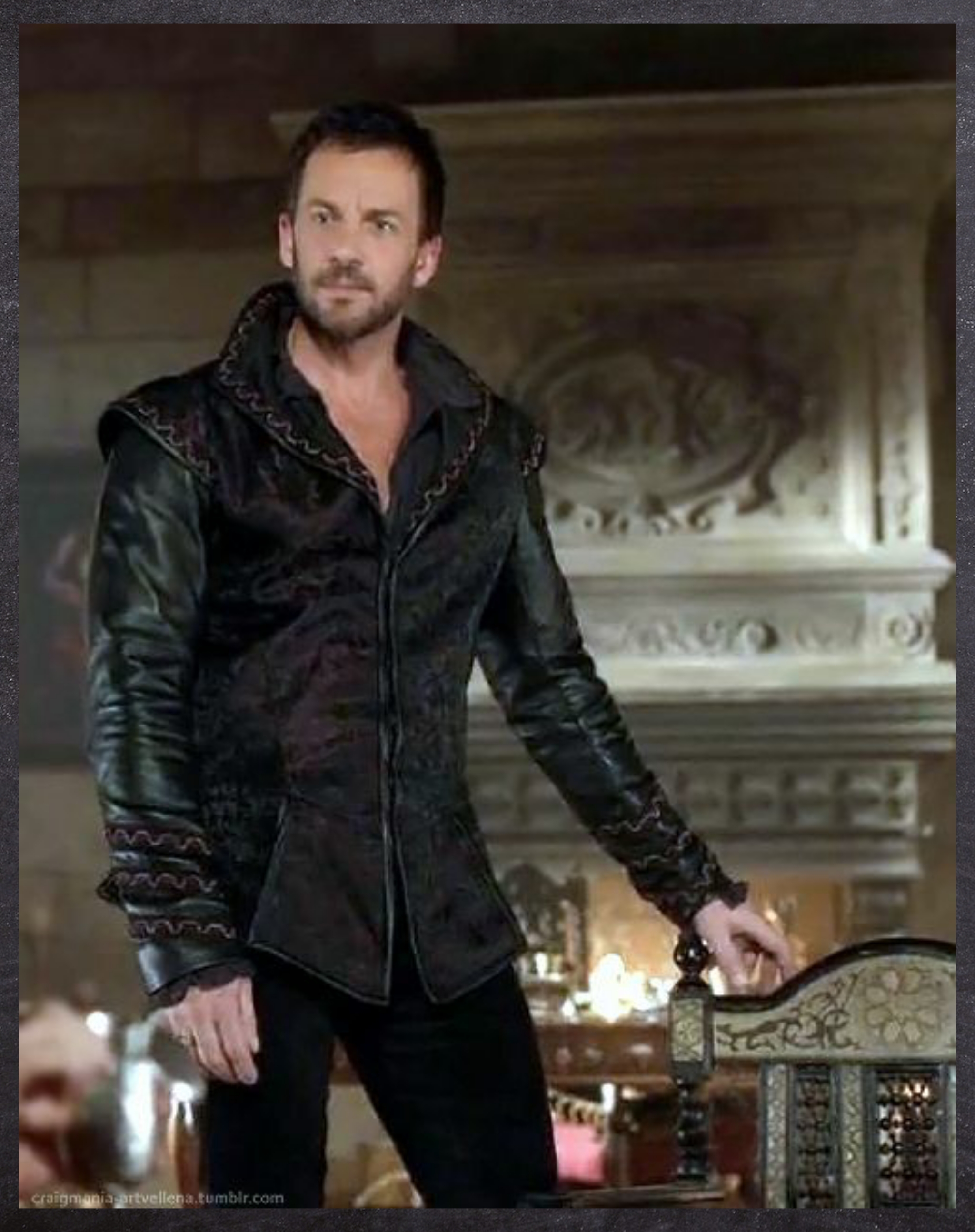
The Show: Lord Stephan Narcisse arrives at court to discover what has happened to his son during the plague related lockdown. Narcisse becomes one of the leading characters, as a leading Catholic courtier entirely invested in his own self-interest. When he discovers that Mary is responsible for his son’s death, he responds by withholding vital supplies from the people of France, starving the country.
He orchestrates the apparent haunting of King Francis by the dead King Henry before outright blackmailing him into executing policies that benefit Narcisse and the Catholics. Narcisse threatens to make Francis’ regicide known if the king implements anything that Narcisse doesn’t want him to, though he later appreciates that his increasingly stringent policies against Protestants lead to the formation of radical Protestant terrorists. Ultimately, Francis frees himself from the blackmail and has Narcisse stripped of his lands in recompense.
On a personal level, Narcisse is a known womanizer and his skill in bed is the subject of much speculation. He engages in affairs with multiple women, notably Princess Claude, and attempts to seduce Lady Lola on multiple occasions. His affair with Claude’s mother, Queen Catherine, however, is long-lasting and at various points, it looks like they may marry. Instead, Narcisse comes to realize his love for Lola is genuine, and Catherine’s increasingly jealously fuelled attempts to keep Narcisse close (including but not limited to cooking and feeding him his prize horse when he’s seen speaking to Lola) ultimately drive him away.
In History: Lord Narcisse is, unfortunately for those of us who love a bit of drama in our history, is entirely fictional. He didn’t exist and he isn’t a composite of other lords either. Francis didn’t kill his father, so nobody blackmailed him over it. Narcisse’s actions however could be seen to be an exaggeration of the French nobility. There were plenty of nobles at court who conducted affairs and oversaw intrigues from the shadows. There weren’t any, however, who conducted affairs with Princess Claude or the queen mother. Under canon law, which would have been held to by Narcisse, sleeping with a woman and then her mother was incest, which was one of the most abhorrent of crimes in church law.
Prince Louis of Conde
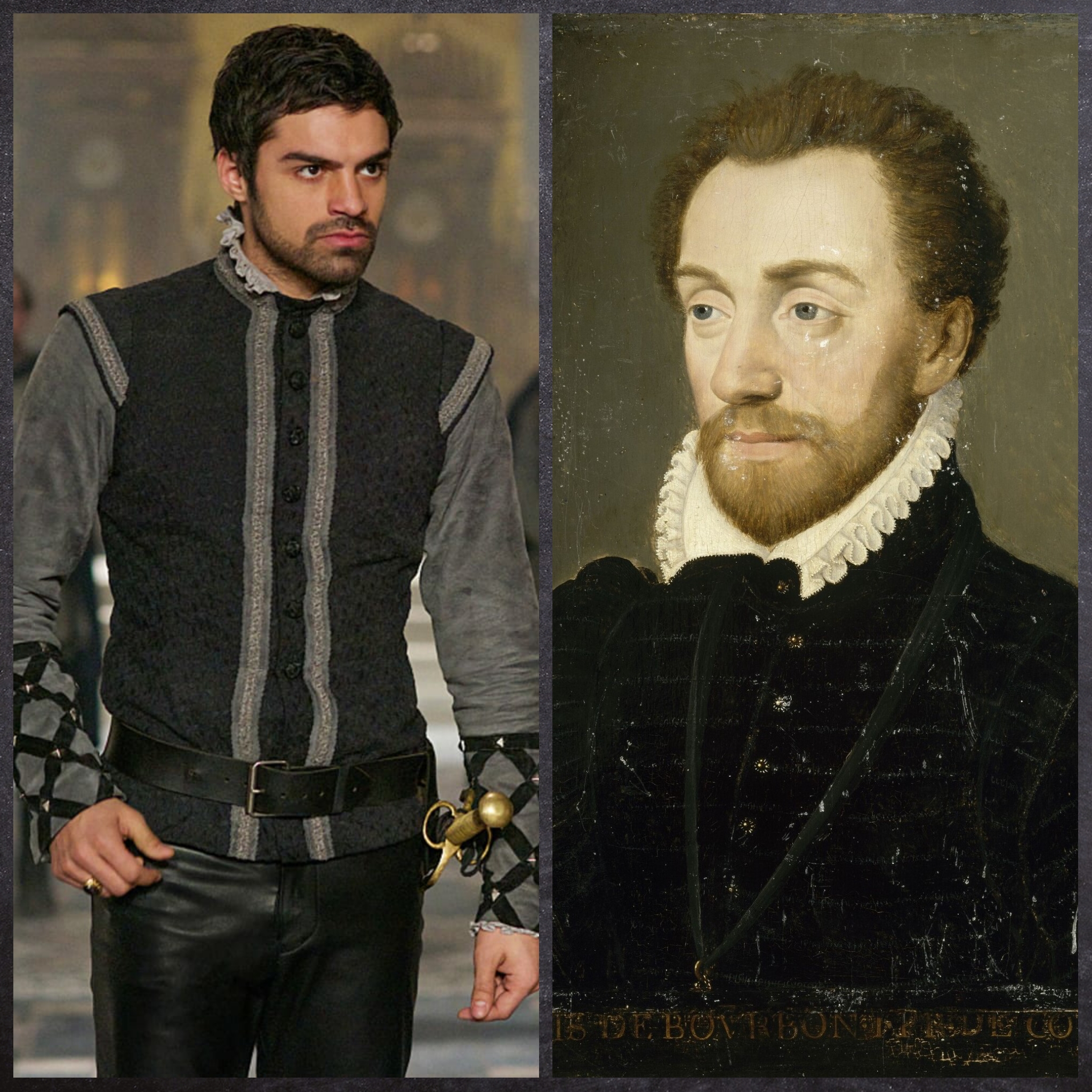
The Show: Prince Louis of Conde appears in the earliest episodes of the season, arriving at court to show his support for his cousin, Francis. He immediately ingratiates himself with Mary and supports Francis despite his zeal for Protestantism which puts him in opposition to the faith of the land.
Although Conde is initially supportive of Francis, as he develops feelings for Mary and sees the strain in their marriage he becomes increasingly hostile. As a French Prince in his own right with a claim to the throne, Conde is a threat to Francis’ rule which only serves to cause more problems between them. It isn’t helped by the fact that Conde is a visible focal point for Protestant support which Mary uses when she attempts to marry him off to first, Princess Claude, and later Lady Lola. After Mary is attacked by Protestant rebels, she heals with Conde rather than Francis, and the relationship between the two princes breaks down completely when Conde and Mary become lovers.
While making plans to run away to Scotland with Mary, Conde also involves himself in potential marriage negotiations with Queen Elizabeth of England. Ultimately, it leads to his marriage by proxy with Elizabeth, making him King of England. In the immediate aftermath, the priest and proxy are killed, and the evidence of the marriage is destroyed, leaving Conde with an irrefutable charge of treason against him and no wife.
Mary assists him in escaping Francis, claiming that he has no designs on the throne. The English ambassador however is waiting with an army and Elizabeth’s support. Within days, Conde declares himself King of France and takes Toulouse while en route to lay siege to the castle.
When it looks like all is lost for Francis, Mary goes to Conde and tells him that she’s pregnant and wants to marry him. Psych! It’s all a ploy for her to disrupt Conde’s siege and stabs him. He manages to survive though and ultimately escapes, returning to his brother Anthoine, King of Navarre.
In History: Louis of Conde, unlike the majority of people in the show, actually… wait for it… existed. Did he exist in the context of the show? Absolutely not, but we can’t have everything. Conde was almost fifteen years older than his cousin, King Francis, and part of the Bourbon family, a junior line of royalty who served under the senior royals, the Valois. He was also a Protestant leader, becoming a prominent leader of the Huguenot forces.
In early 1560, what would have been the first full year of Francis’ reign (if he hadn’t died that same December) various factions opposed to the Guise factions surrounding the new king. Gradually, discontent inspired action and the Amboise conspiracy was formed – a plan to remove Francis from Guise control and bring him under the regency of Louis of Conde who had a tenuous claim to the throne. The conspiracy was exposed and crushed, but Conde managed to survive the initial rounds of arrests. His position soon became untenable and in October he was arrested and tried. He didn’t lead a siege against Francis, though he did later try to take the crown by force from Francis’ brother. (He didn’t succeed at that either).
He absolutely did not have an affair with Mary, Queen of Scots. As a Bourbon, he was opposed to the Guise influence at court so it’s likely that even if they did meet they wouldn’t have been friendly. Lovers would be a mighty stretch. Nor did he marry Queen Elizabeth or even court her. He was never in contention for King of England. For Elizabeth, a Bourbon match would hardly have brought her the necessary prestige and security. Instead, she courted two princes of the house of Valois though ultimately married neither.
Let’s take a moment to consider the marriage of Elizabeth and Conde as shown in the show. The two are married by proxy, in the presence of a witness, but the proxy and priest are killed while the marriage certificate is destroyed. The show then suggests that without this proof that the marriage took place it might as well not have. Conde isn’t considered Elizabeth’s husband and will have to be married again. Needless to say, this is not at all how marriage or weddings worked during this time period.
During the sixteenth century, even the declaration of intent to marry could be considered as binding as a marriage itself. If a person claimed to have married someone, even without a living witness, a priest, or a marriage certificate (which generally weren’t issued at this point in time), their claim would be investigated in court. If Conde married Elizabeth by proxy, even without a living priest or a proxy, he would be her consort. An English ambassador announcing to the world via the French court that the Queen of England had married a Bourbon prince would have been all the proof of a marriage that was needed. I’ll stress that it didn’t happen, Conde didn’t get anywhere close to being considered so much as a suitor for Elizabeth’s hand. But if it had happened, it would not have been so easily dissolved and he would have been the first King Louis of England.
Anthoine, King of Navarre
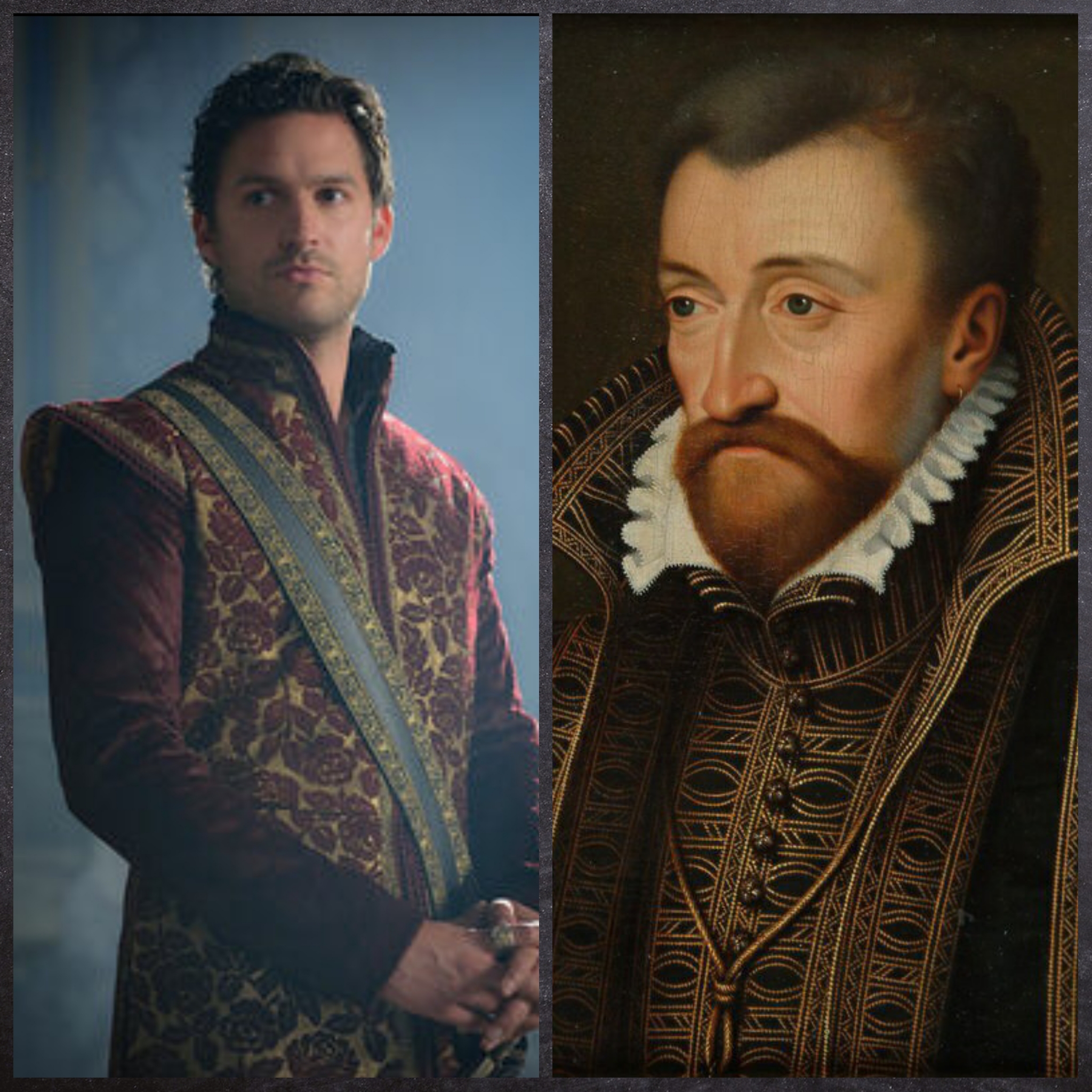
The Show: Louis of Conde’s brother, Anthoine, is King of Navarre by marriage though, and like most of the cast of Reign he has a preoccupation with sex. He has multiple affairs and throws erotic parties where he pairs married couples (and not with their spouse) so that they can have sex in front of the rest of the group. He has a long time grudge against Francis and his family, after his brother Marcus was killed by Bash on the orders of King Henry.
His hatred of the Valois family runs so deep that he tries to break up Bash’s marriage. He proposes to Bash’s wife, Kenna, and succeeds in splitting them up even though Kenna discovers she could never be his wife seeing as he’s already married and his wife is alive, well, and pregnant.
Anthoine is also revealed to be responsible for King Henry’s madness that affected him in the last season. He poisoned the king’s bible which led to his increasing madness, something which isn’t discovered until Catherine begins suffering from the delirious effects of the poison after reading the same bible. He manages to escape any kind of retribution by framing Mary’s uncle, the Duke of Guise for the crime whom Catherine has assassinated.
In History: Anthoine was the eldest surviving son of the Bourbon line, after the death of his brother Louis in infancy. Marcus is a fictional character murdered by the equally fictional Bash in order to manufacture a rivalry between Bash and Anthoine. Historically, Anthoine was a womanizer but this is also exaggerated for drama’s sake. He fathered an illegitimate child which is a far cry from presiding over adulterous public sex parties.
His commitment to religion wavered repeatedly. He converted multiple times even though his brother was a Huguenot general and his wife was Queen of a Protestant power. Despite this, they had a good relationship and were thought to be in love. They were frequent guests of the French court though they didn’t visit during Francis’ brief reign, as they were concerned with their own religious troubles at home. Anthoine didn’t attempt to kill King Henry with a poisoned Bible and he wasn’t responsible for the death of the Duke of Guise.
Princess Claude
The Show: Catherine de Medici’s least favourite daughter, Claude, returns to court showing herself to be every bit as promiscuous as her mother fears her to be. She has a number of affairs and flings, which has caused gossip to make the rounds of the European courts which has practically tanked her marriage prospects. She even admits that as a younger woman, she convinced Bash that they weren’t half brother and sister so that she could have sex with him.
Despite Catherine’s best efforts, Claude manages to evade any attempt at marrying her off or making her respectable which only serves to sour their relationship further. Claude confronts her mother several times, demanding to know why she should hate her so much but never gets an answer. She thinks they’re becoming closer when Catherine tends her through a sudden illness but it turns out that she’s only ill because Catherine is poisoning her (yes, with the intent to kill her).
In History: IRL Claude could not be further from Reign’s Princess Claude, and if I was giving an award for most inaccurate character (which, I might, why not?) Claude is an absolute front runner. At the time of her father’s death, eleven-year-old Claude was still at court and very much not sexually active. Bash is a fictional character created for the show but if he weren’t, we can still assume that young Claude wouldn’t have gotten him drunk so that she could have sex with him.
She was brought up in the same household as her sister Elizabeth, and future sister-in-law, Mary of Scotland. The three girls were very close even though Claude suffered frequently with her health. She is also described as inheriting a hunchback and club foot from her mother but this didn’t impinge on her marriage prospects and in 1559, shortly before her father’s death, she was married to Charles III, Duke of Lorraine. She left for Lorraine that winter, after her brother’s coronation.
Claude was beloved of her husband and of his people. She and Charles had nine children together after consummating their marriage when Claude was fifteen. Though we can’t say with certainty that Claude was her mother’s favourite child, we can certainly say that she wasn’t far off. Catherine visited frequently, attending the baptisms of her grandchildren, nursing her daughter through illnesses, as well as shorter visits simply for her pleasure.
As with so many women of the time, Claude died in childbirth, delivering a short-lived daughter. She was only twenty-seven and much mourned by the people of Lorraine and her husband. Charles would outlive her by almost thirty years but in all that time, he didn’t consider remarrying.
Henriette and Emone Valois
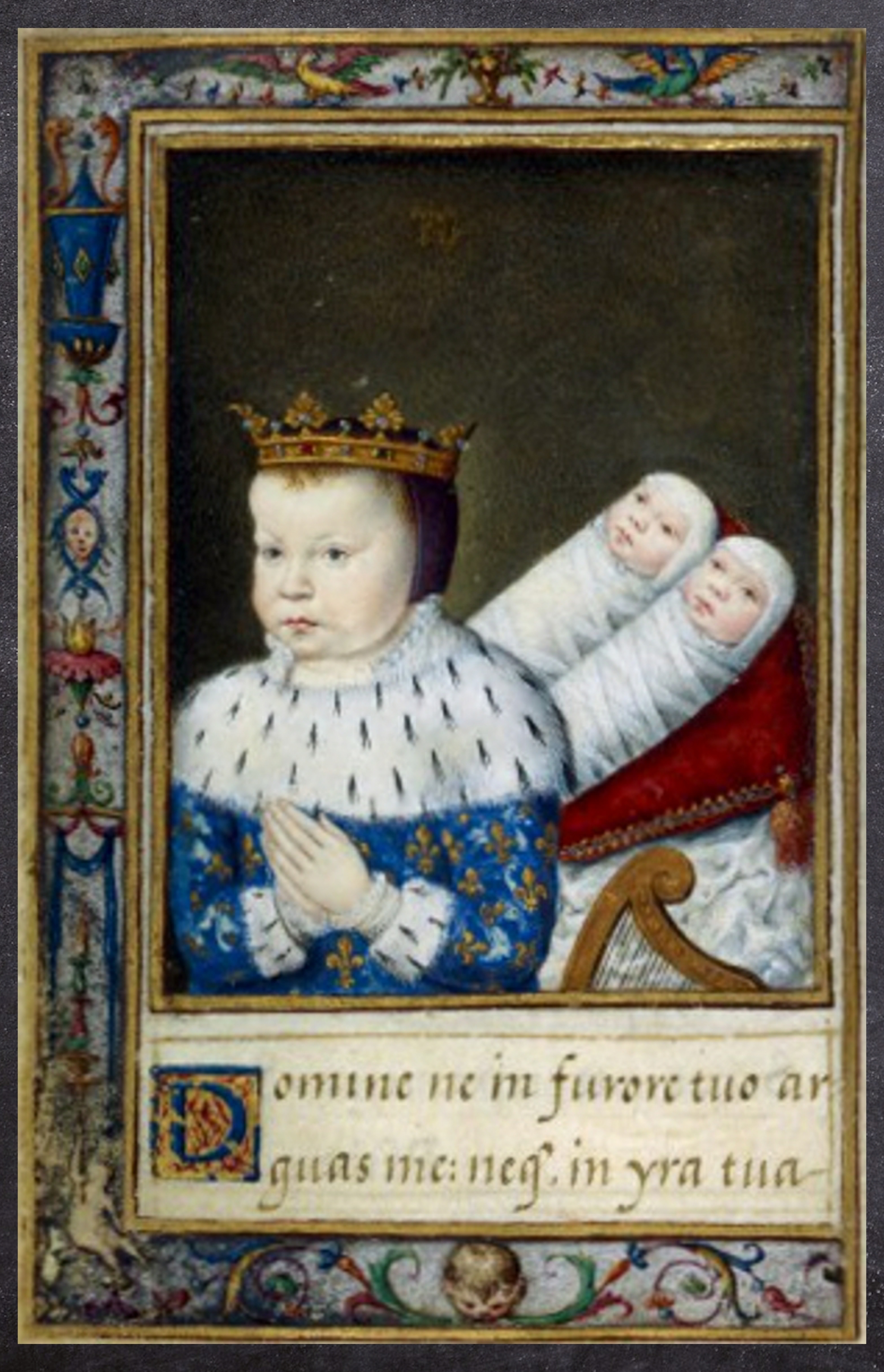
The Show: When Princess Claude returns to court, Catherine is haunted by the ghosts of two young girls. They reveal themselves to be her and Henry’s twin daughters, Henriette and Emone, who died as babies. At the time, Catherine gave out that the two had died of an illness that had gripped them suddenly but that was a lie to cover for Claude who had apparently murdered them. Gasp! In a fit of jealous rage, Claude stuffed the fabric roses from her dress into the babies’ throats, suffocating them as they slept.
When Catherine eventually confronts Claude about it, she protests her innocence and asks Bash to look into the matter and discern the truth. He does so and discovers that the twins’ nanny left her post to have sex with the king. When she returns hours later, she finds that the windows blew open and the twins froze to death. Fearing royal retribution, the nanny places the flowers from Claude’s dress inside their mouths in order to frame the five-year-old princess.
But, the drama doesn’t end there because then Bash discovers that the nanny who framed Claude, was herself framed by Bash’s mother, Diane de Poitiers. Incensed that her lover was still having sex with his wife, Diane unlatched the windows to the twins’ nursery so that they’d either freeze or die of the resulting chill-related fever. When Catherine discovers the truth, knowing that she has punished Claude all these years for a crime she didn’t commit, she attacks Diane, bludgeoning her to the ground before strangling her with one of the necklaces Henry gifted Diane.
In History: I loved this entire murder mystery where even those who thought they’d committed murder, actually hadn’t. It’s beyond ridiculous and I love it. Based on history, however, it is not. Henriette and Emone didn’t exist to be murdered by anyone. Catherine and Henry did have twin girls, Victoire and Jeanne, but Jeanne was stillborn and Victoire died seven weeks later. There’s also nothing to suggest it was foul play and for Claude’s part she was ten years old at the time, already installed with Princess Elizabeth and Mary, Queen of Scots in a household with the royal governess.
Diane de Poitiers had as little to do with the situation as Catherine de Medici had with Diane’s death. It’s not entirely certain what Diane died of but she did so in 1566, at the age of sixty-five. Some years earlier she had fallen from a horse and never fully recovered from her injuries. She was also thought to drink a concoction that incorporated liquid gold in order to keep her youth. It’s entirely possible that consuming liquid gold at this period caused health problems and indeed, when her body was exhumed in 2009, it was found that her hair still contained gold within it. However she died, it wasn’t violently or at the hands of Catherine d’Medici.
The Religious Wars, the Inquisition, and a Rape
The Show: The dominant theme of the season is Protestants and Catholics don’t get on. Mary and Francis are Catholics ruling a Catholic country but the seeds of Protestantism are starting to grow. Protestants want to worship in peace while the Catholics want them to burn or hang, complete with all their families.
What follows is a series of extremist groups trying to force the king into action against the other. A group of almost Nazgûl like riders go about the countryside branding any potential Protestants with the ‘devil’s mark’. The Catholic Vatican send a cardinal to kill any Protestant bearing the mark and he is diligent in his work, even when his gay lover is branded by Bash to show them how ridiculous a stance it is. He doesn’t stop even when it’s revealed the dark riders are themselves a group of Catholics just trying to get rid of their Protestant enemies.
Meanwhile, Protestant extremists kill the minister of their own church, making him a martyr in order to gain sympathy for their own cause. The violence escalates on both sides, with Protestant rebels taking over a monastery in Angers, holding several children hostage, and threatening to blow the monastery up.
A group of Protestants, inadvertently funded by Greer’s husband, Lord Castleroy, lead an assassination attempt on King Francis. They infiltrate the castle, killing several on their way to the king’s chamber only to find that Mary is there alone. After getting nowhere and under increasing pressure, the three men holding Mary attack her and one of them goes as far as to rape her.
With the help of Catherine de Medici, herself a rape victim, Mary composes herself and presents herself to the court claiming that the attempt failed and everything is fine. She does, however, inform several people around her as to what happened including her ladies, her husband, and later Conde. In the aftermath, she struggles to connect with her husband and the court, as Francis violently responds to the attack.
It is Mary and Conde, however, who discover her attackers and Mary herself kills them, burning them alive inside the shack they attempt to take refuge in.
In History: Well. The religious wars were at least a thing that happened but not like that. The Inquisition didn’t hire LARPers for a novel that wouldn’t be written for five hundred years to brand their Protestant rivals, and Protestant extremists didn’t take children hostage and threaten to blow up abbeys. This level of domestic terrorism was not typical of the sixteenth century. Instead, Protestants chafed under the level of restrictions put upon their worship by the Catholic Guise group that controlled the king. This period of French history was dominated by wars of religion, exacerbated by the short-lived reigning kings of the Valois family. Francis’ was only king for a year during which the problems had started but were yet to reach their zenith.
Most significantly however, there was no plot to assassinate the king and Mary was not raped by a disgruntled Protestant. This simply didn’t happen. In the show they make it sound at least half believable by saying they just won’t tell anyone. But this is promptly destroyed by the fact that they do tell anyone. By the end of that episode alone, Mary has told Catherine, her husband, all three of her ladies, while Bash and Conde discover it within a day of it happening. It is not a well kept secret and if it had happened then there would have been at the very least, rumours about it. But there weren’t, and I can’t stress how much it didn’t and couldn’t have happened. Equally, Mary didn’t hunt down the killers and burn them alive herself. That’s just more drama if it were needed at this point.
Once more with feeling: Mary, Queen of Scots was not raped by a Protestant extremist.
Jean-Philippe
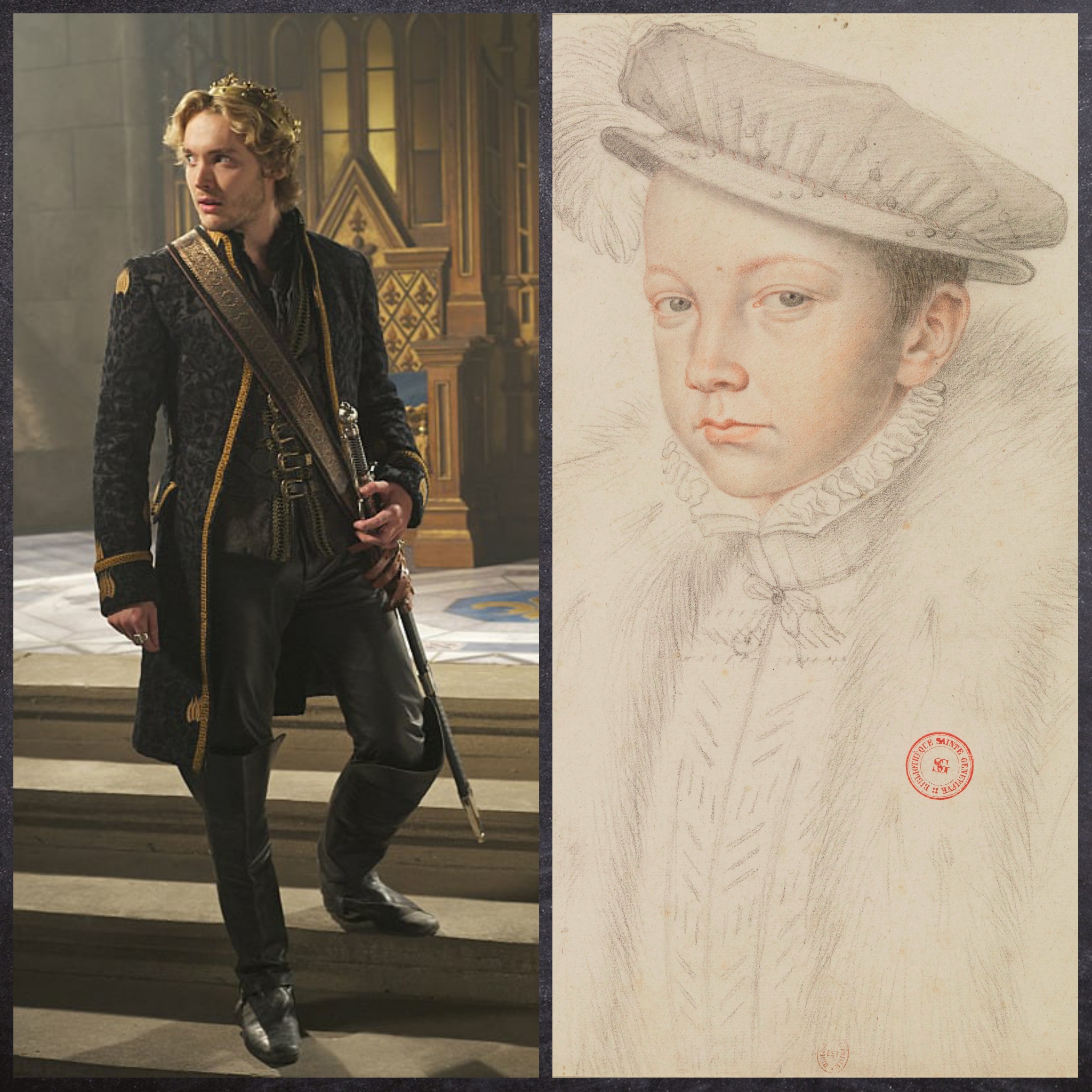
The Show: King Francis avoids the plague at the castle by heading out to find Lady Lola who he hears is about to give birth to his child but faces difficulties in the labour. At Mary’s encouragement, he goes in search of her, arriving to find that she’s given birth to a healthy baby boy, and come through it alright herself. They return to the palace where Mary encourages Francis to recognize the baby as his own and give him all the privileges that come with it.
Francis names the baby, Jean-Philippe, and creates him Baron of Vallie, setting up a nursery for him at the castle. Lola is in constant attendance on her son which draws her closer to Francis, forming a familial relationship between the two. During Louis of Conde’s siege, Francis is told that Jean-Philippe was killed and enters a state of deep mourning. It transpires that this was a ploy to encourage Francis into executing Conde, orchestrated by Catherine de Medici. Appalled by his mother’s callous and duplicitous nature, Francis banishes Catherine from court. In response to what Catherine perceives as Mary’s poor decisions, she leaves France for England and joins Queen Elizabeth in her ongoing campaign against Mary.
In History: King Francis didn’t have any children, legitimate or otherwise, and he didn’t have any with one of his wife’s ladies. There is in fact, some dispute over whether or not his marriage with Mary was even consummated. He isn’t thought to have entered puberty at the time of his death so the chance of him fathering any children was already pretty low. Jean-Philippe (or John Phillip as they insist on pronouncing it) is entirely fictional and his title along with him.
Catherine de Medici, therefore, didn’t orchestrate a plot which led Francis to think his son was dead. She wasn’t ever exiled from court under Francis and didn’t meet Elizabeth personally and they had little reason to speak to each other. One of the few letters exchanged between the two was when Elizabeth’s suitor and Catherine’s son, the Duc d’Anjou, died of malaria aged just twenty-nine.
On to season three…
If you’d like to join me for more fun and games in picking apart history, and other behind the scene tangents, you can support me via my Patreon.

